
NVDAX
NVIDIA tokenized stock (xStock)
| تریدر | نوع سیگنال | حد سود/ضرر | زمان انتشار | مشاهده پیام |
|---|---|---|---|---|
 DanyBoy4kSıralama: 13 | خرید | حد سود: تعیین نشده حد ضرر: تعیین نشده | 14.11.2025 | |
 TJ01Sıralama: 162 | خرید | حد سود: تعیین نشده حد ضرر: تعیین نشده | 07.11.2025 | |
 bwySıralama: 61 | خرید | حد سود: تعیین نشده حد ضرر: تعیین نشده | 05.11.2025 | |
 litwizardSıralama: 716 | خرید | حد سود: تعیین نشده حد ضرر: تعیین نشده | 07.11.2025 | |
 isahebdadiSıralama: 1056 | خرید | حد سود: تعیین نشده حد ضرر: تعیین نشده | 04.11.2025 |
NVIDIA tokenized stock (xStock) Fiyat Grafiği
سود Üç Ay :
سیگنالهای NVIDIA tokenized stock (xStock)
filtre
Mesajı şuna göre sırala
Tüccar Türü
timeframe
Pepperstone
وضعیت سهام انویدیا قبل از گزارش درآمد: اصلاح جزئی یا تغییر کامل بازار؟
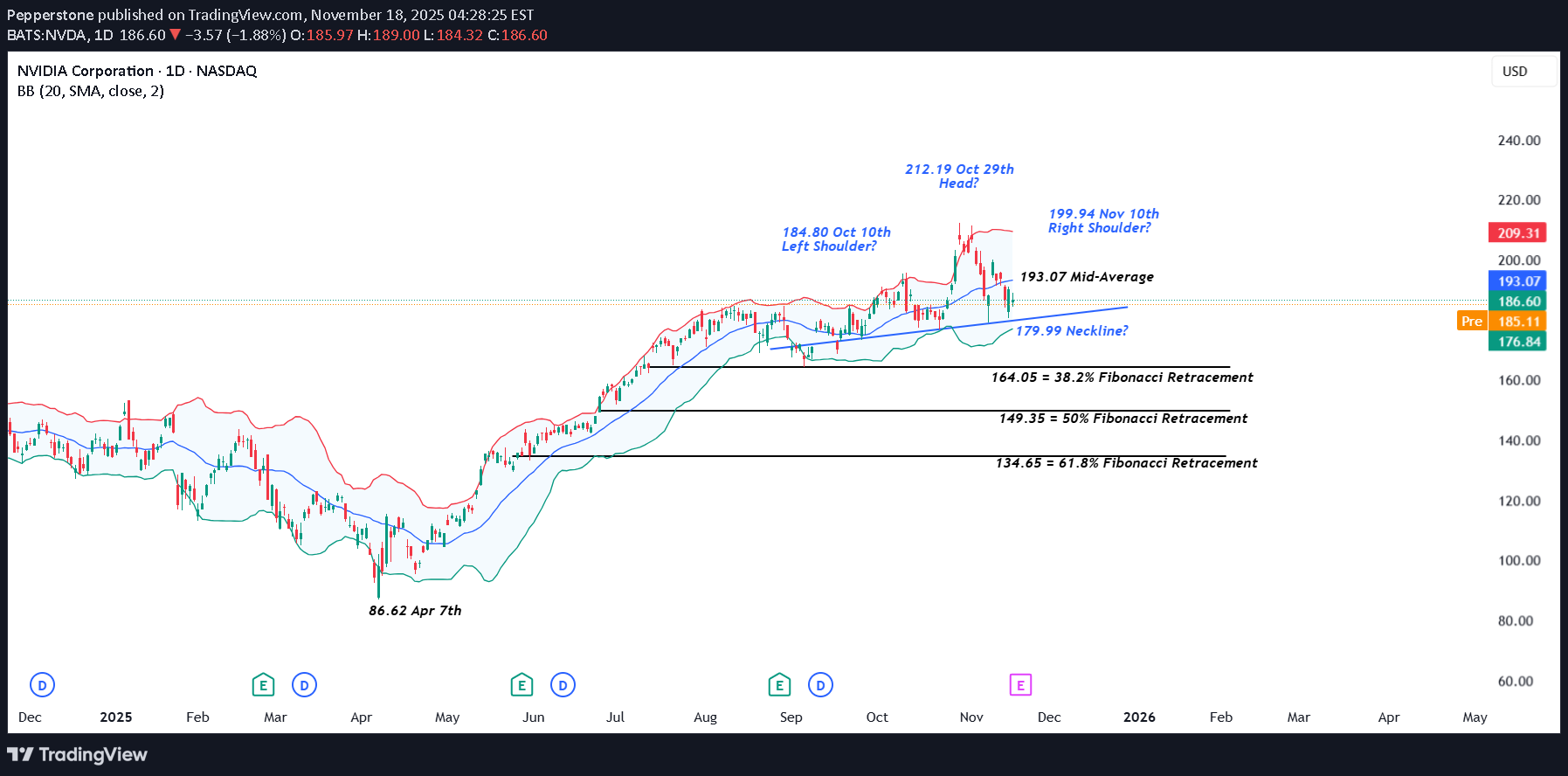
There is no getting away from it, NVIDIA’s earnings, which are due on Wednesday after the close are making traders nervous. The problem with being the largest company in the world by market capitalisation (approx.$4.53 trillion) with a roughly 7.5% weighting in the S&P 500 and closer to 10% weighting in the Nasdaq 100 is that everything related to your company matters, especially when you are seen as the global AI benchmark at a time when traders are wondering if lofty valuations given to the leading companies in the space are justified or not. Suddenly, stories like Softbank selling its entire NVIDIA stake of $5.8 billion last week, gets more headline space in the financial press and now your Q3 earnings are potentially being seen as important to the direction of market sentiment and risk appetite as whether the Federal Reserve decides to cut interest rates again at its final meeting of the year on December 10th. The earnings, when they are released are anticipated to be strong, with Reuters reporting analysts expecting an average 54% year on year rise on Q3 earnings per share. However, while traders may be judging the actual results against market expectations, they may also be keen to hear the updates from CEO Jensen Huang regarding future revenue and chips sales moving forward. With the potential for extra volatility in NVIDIA’s share price across the next 48 hours being apprised of the technical backdrop could be important. Technical Update: Limited Correction or Sentiment Shift? It has been a choppy period for the Nvidia share price since mid-September 2025, activity that has seen 3 distinct highs in price posted. As the chart below shows, these stand at 184.80 on October 10th, 212.19 from October 29th and 199.94, scored on November 10th. As you can also see on the chart, the 2nd of these 3 peaks at 212.19, is higher than the other 2, which is important from a technical perspective. This may lead some analysts to suggest this activity could be forming a potential Head and Shoulders top pattern. It is important to stress that a Head and Shoulders pattern must be completed by a close below the ‘neckline’ or the trend connecting recent price lows, which in the case of Nvidia currently stands at 179.99. Even then, completion of such a pattern isn’t a guarantee of a sentiment shift, but as we approach Nvidia earnings on Wednesday, risks may turn towards increased price volatility, and being aware of potentially relevant support and resistance levels may prove useful. [bWhat if Closes Below 179.99 Support are Seen?: Having seen recent price weakness held and reversed to the upside by the uptrend currently standing at 179.99, this could now be viewed as the first support focus. However, with it also possibly being the neckline of a potential Head and Shoulders pattern, it may prove to be pivotal moving forward. While there is no guarantee closes that below the support at 179.99 may lead to a further phase of price weakness, it might skew risks towards continued declines. Focus may then turn towards 164.05, a level equal to the 38.2% retracement level of April to October strength, possibly even towards 149.35, which is the 50% retracement. What if 179.99 Support Remains Intact?: As already said, any Head and Shoulders pattern must see closes below neckline support to suggest a completion and risks for further price declines. For Nvidia the 179.99 support is still intact on a closing basis, and it could be argued this is not yet a valid reversal pattern. As such, while the 179.99 level holds, traders may view recent price declines as a limited correction within what could still be classed as an uptrend in price. However, if a further phase of price strength is to materialise, traders may require closes back above the still rising Bollinger mid-average currently at 193.07. Such moves if seen, could then lead to tests of 199.94 the November 10th high, even on towards 212.19, the October 29th extreme. The material provided here has not been prepared accordance with legal requirements designed to promote the independence of investment research and as such is considered to be a marketing communication. Whilst it is not subject to any prohibition on dealing ahead of the dissemination of investment research, we will not seek to take any advantage before providing it to our clients. Pepperstone doesn’t represent that the material provided here is accurate, current or complete, and therefore shouldn’t be relied upon as such. The information, whether from a third party or not, isn’t to be considered as a recommendation; or an offer to buy or sell; or the solicitation of an offer to buy or sell any security, financial product or instrument; or to participate in any particular trading strategy. It does not take into account readers’ financial situation or investment objectives. We advise any readers of this content to seek their own advice. Without the approval of Pepperstone, reproduction or redistribution of this information isn’t permitted.
عملکرد سهام انویدیا (NVDA) قبل و بعد از اعلام گزارشهای مالی: آمار و ارقام کلیدی
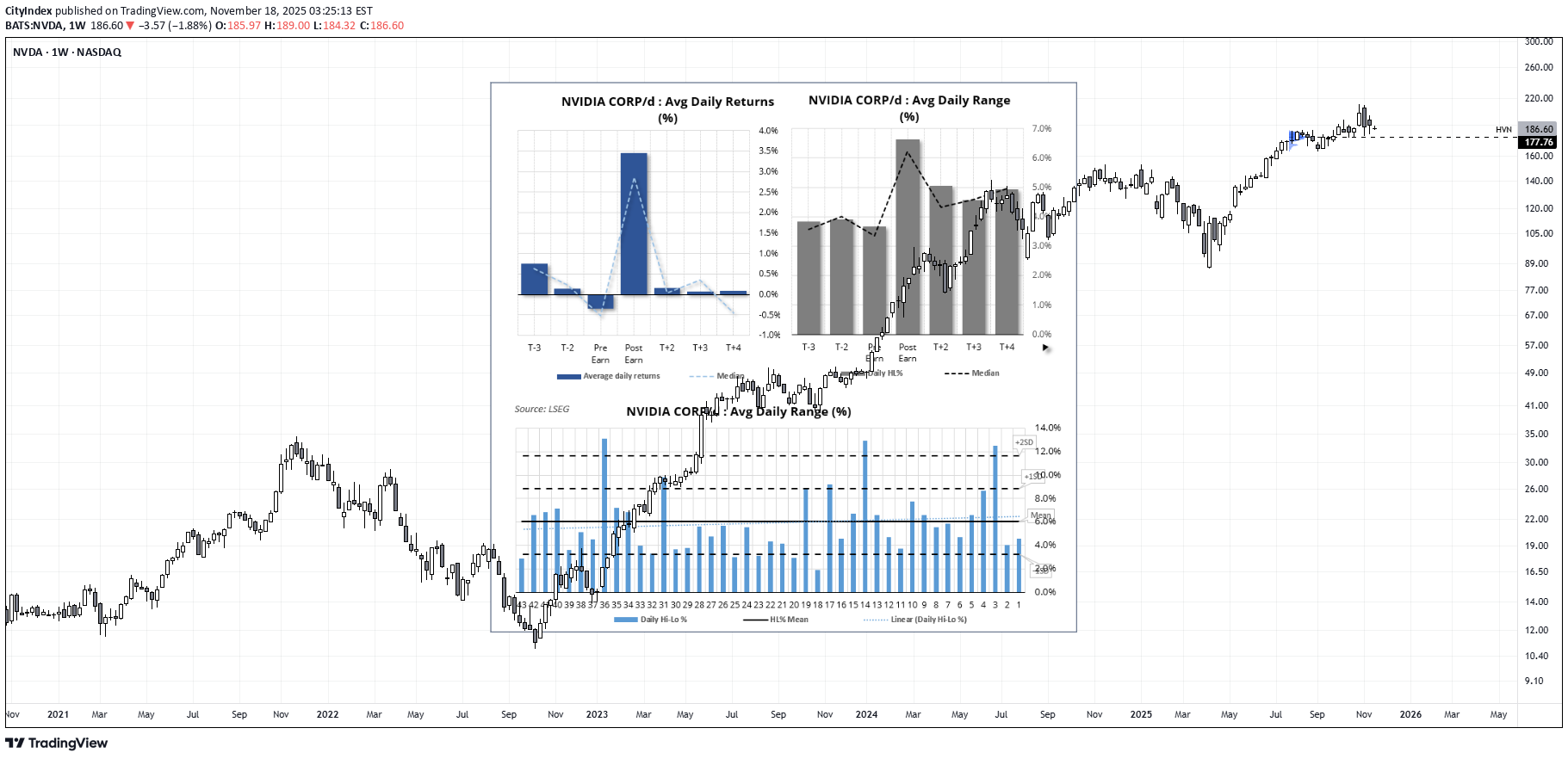
Nvidia Çarşamba günü ABD kapanışından sonra kazançlarını açıklayacakken, geçmiş raporlara, Nvidia grafiğine ve Nasdaq'a göre son fiyat hareketlerine göz atıyorum. Matt Simpson, City Index Piyasa Analisti.

SwingTraderPhilTV
هشدار بزرگ: انویدیا در آستانه سقوط 25 درصدی! آیا زمان فروش (شورت) فرا رسیده است؟
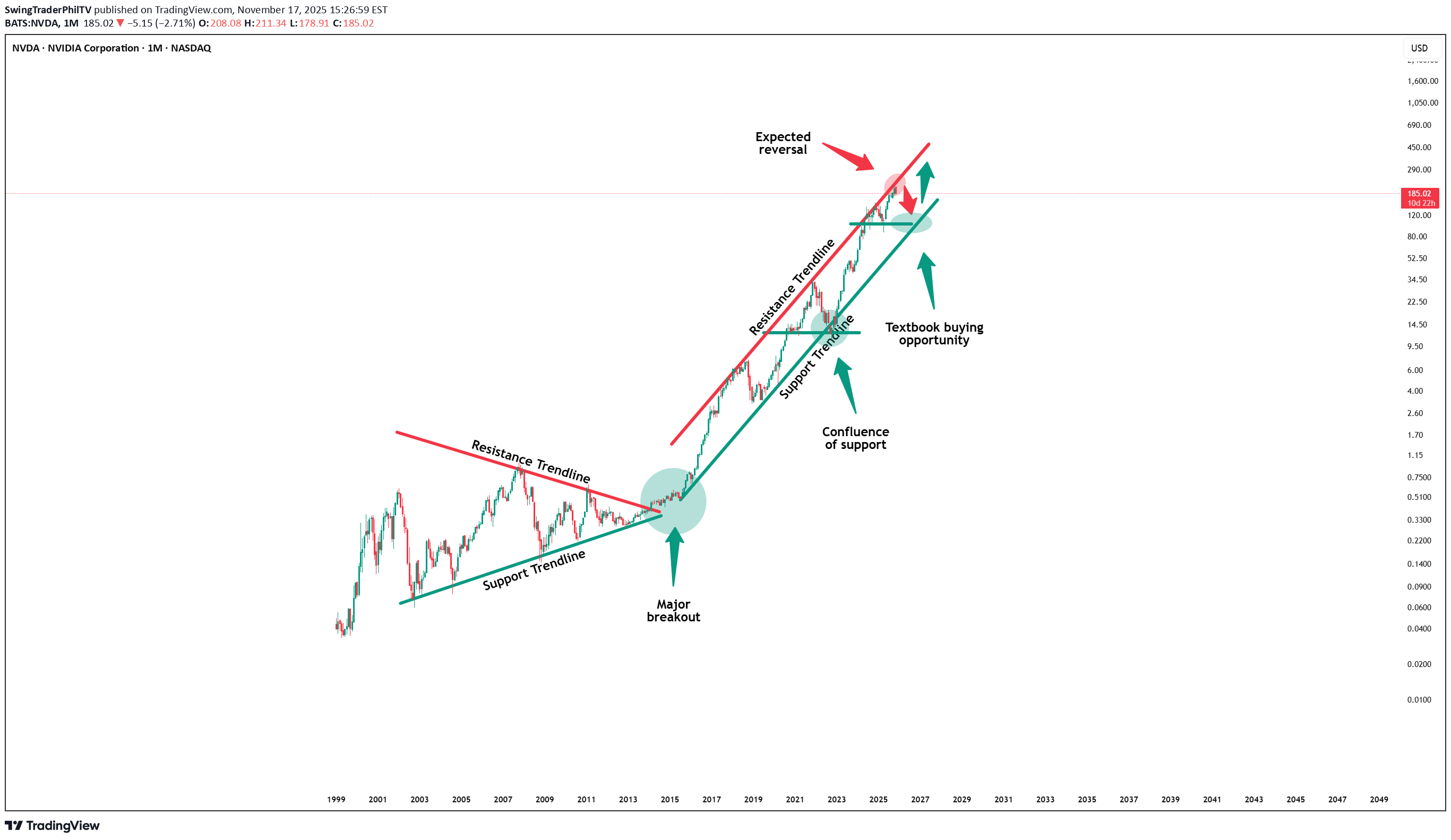
💣Nvidia ( NVDA ) şimdi bir üst oluşturuyor: 🔎Analiz özeti: Sadece birkaç gün önce Nvidia major direnç trend çizgisini mükemmel bir şekilde yeniden test etti. Geçmişte her zaman böyle bir yeniden testin ardından aşağı yönde bir major move gelirdi. Bu nedenle Nvidia, gelecekte %25'lik başka bir düşüşe yol açabilecek bir major düşüşüne hazırlanıyor. 📝İzlenecek seviyeler: 180$ ve 140$ ve 100$ SwingTraderPhil SwingTrading.Basitleştirilmiş. | Yatırım.Basitleştirilmiş. | #UZUNVÖNLÜVİZYON

quantsignals
سیگنال فروش پنهان برای انویدیا (NVDA): آیا خریداران کم آوردند؟
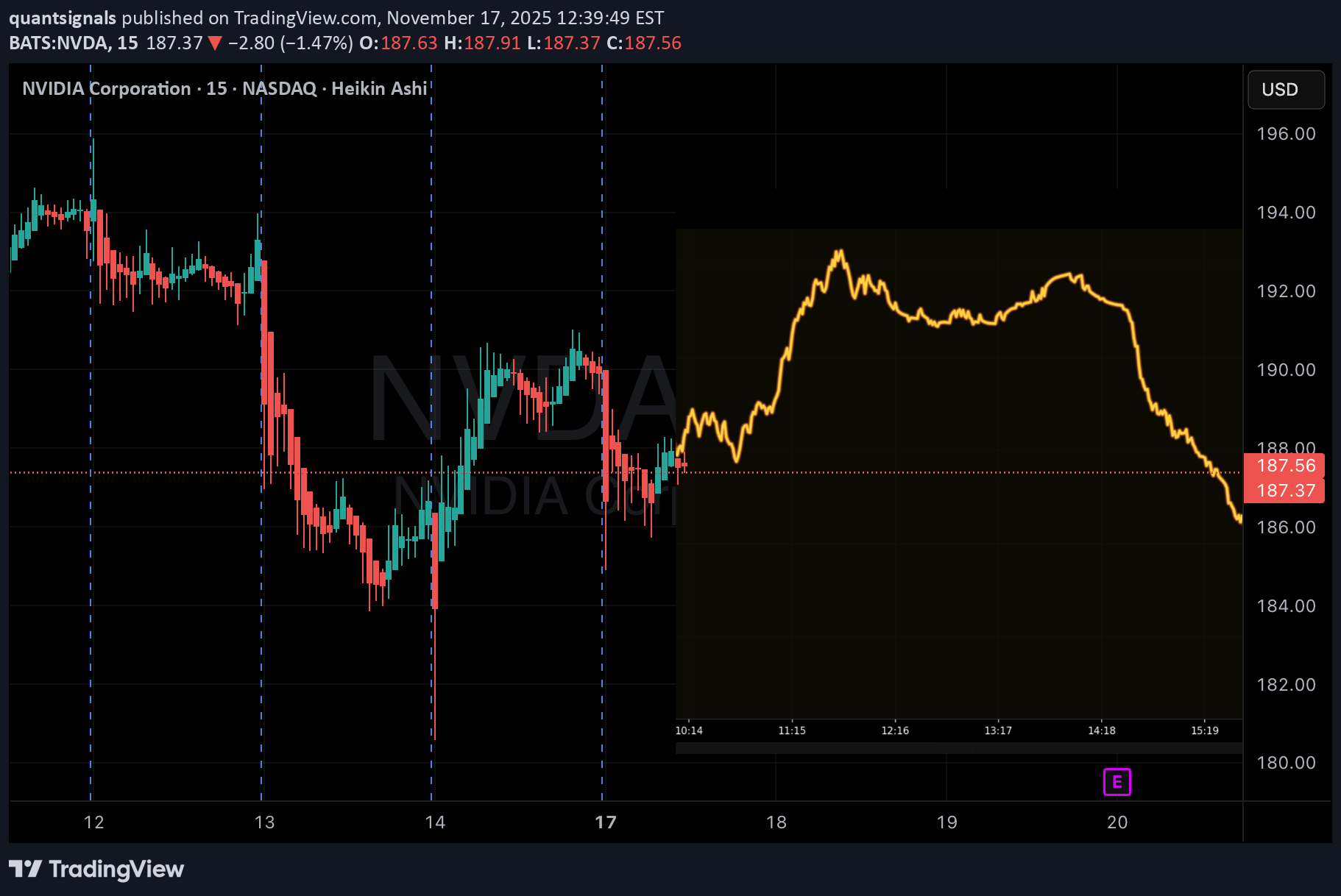
NVDA (QuantSignals V3) Pazar Yapısı: NVDA, fiyatın 189-190$ seviyesindeki kısa vadeli direncin yakınında seyretmesiyle nötr-zayıf bir ivme gösteriyor. Alıcılar güç kaybediyor ve bant daha düşük yüksek formasyonlar gösteriyor, bu da potansiyel tükenmenin sinyalini veriyor. Trend Görünümü: Katy 1M modeli, aşağı yönlü baskının hafif olduğunu işaret ediyor. Nötr trend okumasına rağmen, gün içi yapı orta derecede volatilite (%16,5) tarafından desteklenen kontrollü bir geri çekilmeye doğru eğiliyor. Sipariş Flow Analizi: Momentum flow, yukarı yönlü hacmin azalmasıyla birlikte yavaşlıyor gibi görünüyor. Mikro trend, zayıflama davranışını öne sürüyor; küçük rallilere satış yapılabilir. Anahtar Seviyeler: Direnç: 189,40 Dolar / 191,70 Dolar Destek: 188,00 ABD Doları / 186,80 ABD Doları Kısa Tetikleme Bölgesi: 188,50 ABD Doları – 189,00 ABD Doları Vision Özet: NVDA daha düşük bir ivme, zayıf alıcı inancı ve kısa taraflı bir mikro değişim gösteriyor. En iyi kurulum, 188,00 doların altındaki bir sonraki likidite cebini hedefleyen sıkı kısa kafa derisi ile uyumludur.

FXTraderPaul
گزارش درآمد انویدیا (NVDA): آیا این هفته سهم به اوج میرسد یا سقوط میکند؟
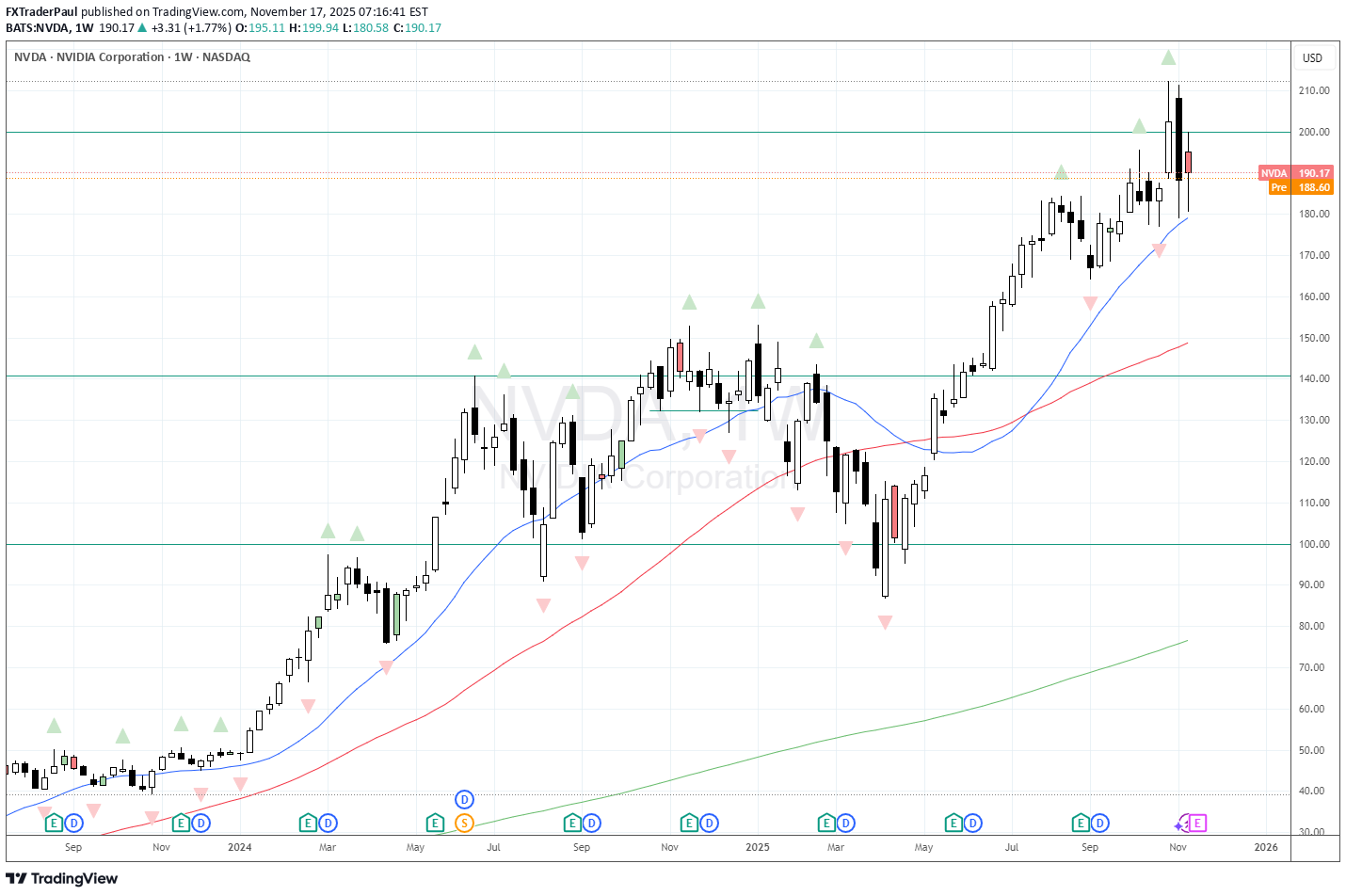
NVDA'da birkaç aydır büyük yükseliş hareketleri yaşanıyor ancak son birkaç hafta dalgalı geçti. 200 dolar seviyesini reddettik ve şimdi kendimizi 180 doların ve Haftalık 20 MA'nın üzerinde buluyoruz. Rakamlar iyi olursa baş döndürücülüğün bizi daha yukarılara taşıyacağına eminim. Rakamlar zayıfsa, 180$ ve Haftalık 20MA act destek olarak mı sorulacak, yoksa çökecek mi? Eğer öyleyse, genel olarak teknoloji ve ABD pazarlarına ne olacak? Bu, ilginç bir hafta olacağı anlamına geliyor!
پیشبینی حرکت قیمت انویدیا (NVDA) پیش از اعلام نتایج: تحلیل تکنیکال و انتظارات بازار
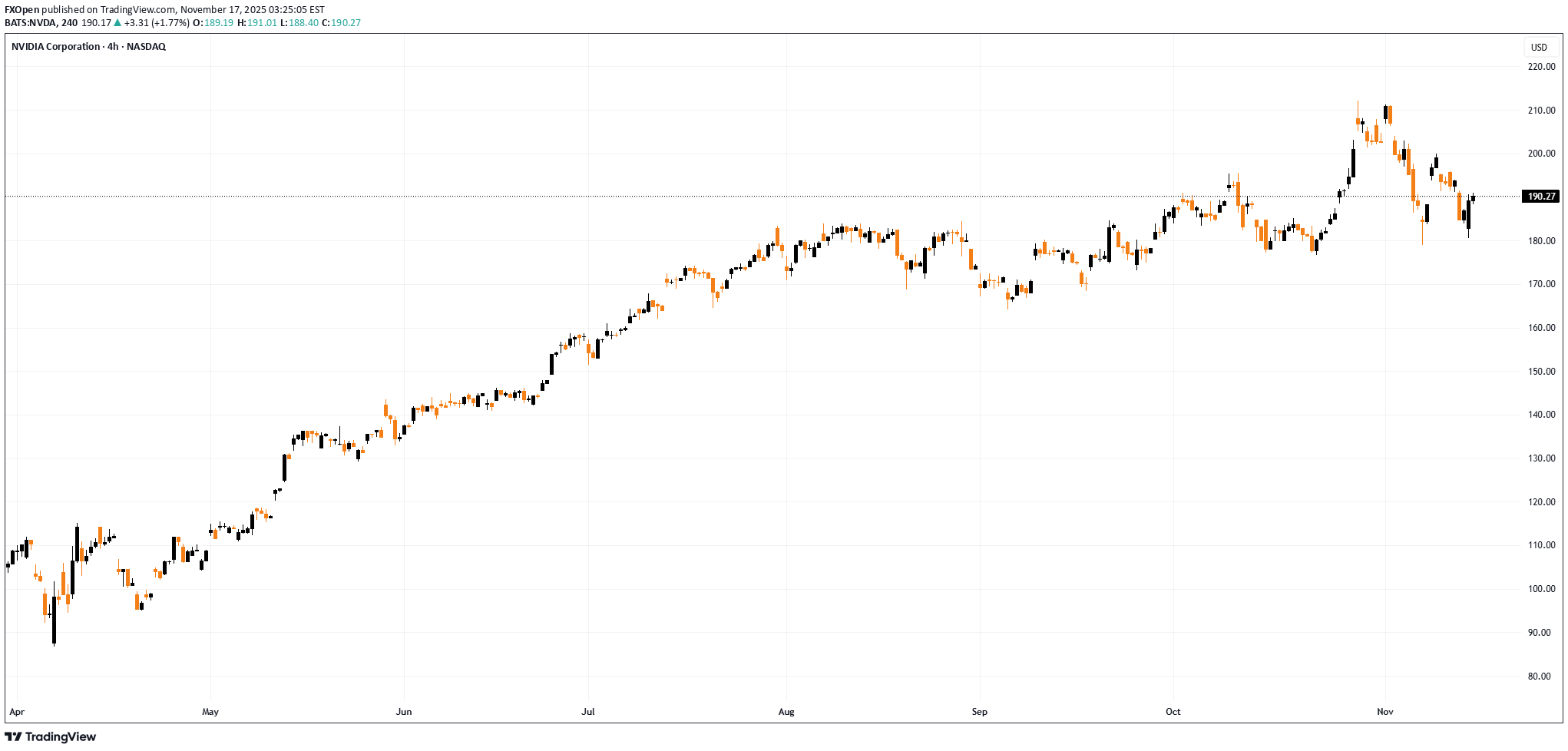
Nvidia'nın (NVDA) Kazançları Önünde: Fiyat Nasıl Olabilir Move Çarşamba günü, ABD'deki ana ticaret seansının kapanışından sonra, Nvidia üç aylık sonuçlarını açıklayacak; bu rapor yalnızca başka bir kurumsal data grubu olarak değil, aynı zamanda yapay zekanın yönlendirdiği tüm boğa koşusu için çok önemli bir test olarak görülüyor. NVDA hisseleri yılın başından bu yana %40'tan fazla artış gösterdi ve şirket artık prove bu artışın haklı olduğunu ve AI devriminin hâlâ hızlandığını görmeli. Basında çıkan haberlere göre Wall Street analistleri iyimserliğini koruyor: → Gelir: 54,9 milyar dolar civarında tahmin, yıllık yaklaşık %56 büyüme anlamına geliyor. → Hisse başına kazanç (EPS): yaklaşık 1,25$ (önceki çeyrek: 1,05$). Yatırımcılar neye odaklanmalı? Aşağıdakiler özellikle önemli olacaktır: → data Data Merkezi gelirinde, AI patlamasının sağlam kalıp kalmadığının temel göstergesi; → piyasa, Büyük Teknoloji'nin AI'e yoğun harcama yapmaya devam edeceğine dair güvence ararken ileriye yönelik rehberlik. Nvidia (NVDA) Grafiğinin Teknik Analizi NVDA'daki son fiyat hareketi düşüş eğilimi olarak yorumlanabilecek bir diziye işaret ediyor: → 28 Ekim: psikolojik 200 dolar seviyesinin üzerinde güçlü bir yükseliş; → bu bariyerin üzerinde tutunamama; → Kasım başında mumların genişlemesiyle artan hacimlerde (Nasdaq data) gerileme. Daha geniş piyasa bağlamında, Kasım ayı başında NVDA'nın major hisse senedi endekslerinden düşük performans göstermesi dikkate değer; bu da satıcıların 200 dolar civarındaki güçlü direncinin sinyalini veriyor. Yükseliş perspektifinden bakıldığında, tüm zamanların en yüksek seviyesinden düşüş, daha büyük bir yükseliş trendi içindeki bir düzeltme paternine (red'de gösterilen) benziyor. Ancak kazanç raporu yayınlandığında piyasanın yüksek beklentilerinin karşılanmama riski bulunuyor. Böyle bir durumda NVDA düşüşünü, desteğin 165 dolara yakın olduğu yükselen kanalın alt sınırına doğru genişletebilir. Bu makale yalnızca FXOpen markası altında faaliyet gösteren Şirketlerin görüşlerini yansıtmaktadır. FXOpen markası altında faaliyet gösteren Şirketler tarafından sağlanan ürün ve hizmetlere ilişkin bir teklif, talep veya tavsiye olarak yorumlanmamalı veya finansal tavsiye olarak değerlendirilmemelidir.

BullBearInsights
آیا انویدیا (NVDA) پس از ریزش سنگین، تثبیت شد؟ تحلیل سطوح حیاتی و رازهای پشت جهش قیمت
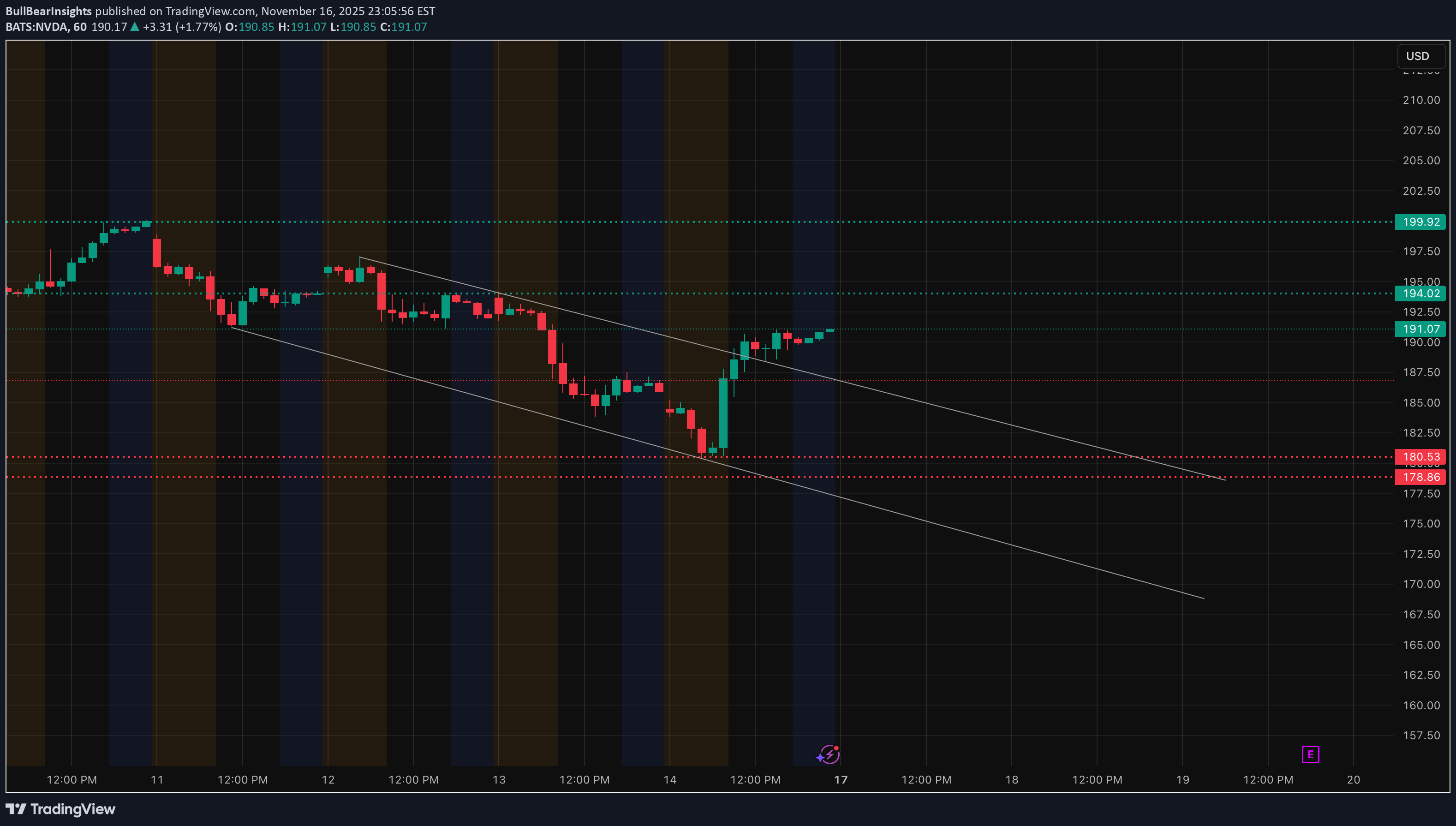
NVDA, günlerce süren kontrollü satışların ardından nihayet ilk gerçek istikrar işaretini gösterdi. Düşüklerin move olması rastgele değildi; farklı zaman dilimlerine yakınlaştırdığınızda ve bunu GEX manzarasıyla birleştirdiğinizde, sıçrama aslında çok anlamlı oluyor. NVDA deep koyma bölgesine düştü, dibe vurdu ve sonra kararlı bir şekilde tekrar tırmandı. Burada gerçekte neler olduğunu açıklayalım. 1️⃣ 1 Saatlik Grafik - Düşüş Trendi, Ancak Alıcılar Sonunda Yükselişe Geçti 1 saatlik grafik, NVDA'nın günlerdir her küçük desteği kırdığını ve alçalan kanaldan temiz bir şekilde aşağı kaydığını gösteriyor. Satış baskısı ancak fiyat 178-181 bölgesine dokunduğunda azaldı. Trend çizgisi desteğinin önceki likidite cepleriyle buluştuğu yer burasıydı ve alıcılar anında tepki verdi. Dikkate değer olan, NVDA'nın 190'a doğru ne kadar hızlı toparlandığıdır. Bu bana iki şey anlatıyor: 1. Satıcılar agresif bir şekilde düşük seviyelerden satış yaptı. 2. Alıcılar bu trend çizgisine yaklaşmayı bekliyorlardı. Önemli 1H seviyeleri: * 190–192: İlk direnç testi * 194–195: Kritik bölge NVDA geçen sefer geri alamadı * 199–202: Momentum artarsa daha büyük direnç * 178–181: Sıçramayı başlatan güçlü talep bölgesi 1H, “düz aşağı”dan “kontrollü sıçramaya” ilk geçişi gösteriyor. 2️⃣ 15 Dakikalık Grafik — Momentum Yukarı Dönüyor, Ancak Teyit Gerekiyor 15M grafiği, NVDA'nın yükseliş yolunda çok sayıda küçük yükseliş FVG'sini geri aldığını gösteriyor. En önemli kısım NVDA'nın gün içi geri çekilmeleri nasıl ele aldığıdır; her düşüş sığdı ve hızlı bir şekilde satın alındı. Erken tersine dönme davranışı böyle görünür. 15M'de gördüğüm önemli şeyler: * Fiyat altında yükseliş yönlü FVG'ler oluşuyor → alıcılar düşüşleri kabul ediyor * Kısa vadeli direnç 191-192'de → fiyat burada tereddütlü * Trend çizgisinin geri kazanılması, NVDA'ya daha yüksek testleri gerçekleştirme olanağı sağlar 15M henüz güçlü bir yükseliş trendini teyit etmiyor ancak baskın satıcılardan en azından rekabet eden alıcılara doğru net bir karakter değişimi gösteriyor. 3️⃣ GEX (1 Saat) — NVDA'nın Neden Dibe Ulaştığını Tam Olarak Açıklıyor Bu move'in tamamını birbirine bağlayan kısımdır. NVDA, korunma baskısının yükseldiği deep PUT duvarında 178-181 civarında tam olarak sıçradı. Oradaki geri dönüşün bu kadar keskin olmasının nedeni budur. Olumlu Gama Seviyeleri * 191: İlk GEX çekimi * 194–195: Ağır GEX kümesi * 200–203: 2. çağrı duvarı * 210: Büyük GEX10 + 3. çağrı duvarı Eğer NVDA 194-195'i geri alabilirse, 200-203'e doğru move, yalnızca grafikte göründüğünden çok daha kolay hale gelir. Olumsuz Gama Seviyeleri * 182: Pivot bölgesi * 178: Ana satış duvarı — satışı durduran tam seviye * 175–170: Yalnızca NVDA'nın 178'i kesin bir şekilde kaybetmesi durumunda etkinleşir GEX yapısı temizdir: * Satıcılar 192'nin üzerinde güç kaybediyor * Alıcılar 182 seviyesinin altında kontrolü kaybediyor * Gerçek savaş bölgesi 188–192 arasındadır Bu, yatırımcıların şu soruyu sormasını sağlayan türden bir GEX haritasıdır: "NVDA neden her zaman aynı tuhaf seviyelerde yükseliyor veya duruyor?" (Ve evet — GEX cevabı veriyor.) 🎯 11/17 NVDA'da Nasıl Ticaret Yapıyorum 🔼 Boğa Senaryosu (Sadece 192 Üzeri Tercih Edilir) NVDA'nın 192'yi güçlü bir şekilde aşması gerekiyor. Bu olursa: Hisse Senedi Ticareti Fikri: * Giriş: 192,20–192,50 * Hedefler: * 194 * 195 * 198 * 200–203 (duvar bölgesini arayın) Seçenekler Fikri: * 195C veya 200C * Momentum bazlı ticaret IF NVDA hacimle 192'yi geri aldı * Her GEX bölgesinde ölçeklendirme Bu en temiz kurulumdur. 🔽 Düşüş Senaryosu (Yalnızca NVDA 192'yi Reddederse veya 182'yi Kaybederse Geçerlidir) Giriş #1 (Agresif): * 192'yi reddeder → 188'e kısaltır Giriş #2 (Daha Güçlü Onay): * 182'nin altına kırılma Hedefler: * 180 * 178 (güçlü duvar) * 175 (eğer volatilite yükselirse) Seçenekler Fikri: * Hızlı hareketler için 185P *Devam için 180P * 178'in altında → olumsuz yön hızla hızlanıyor ⚠️ Doğrama Bölgesi: 188–191 Bu, NVDA'nın muhtemelen duraklayacağı, sahtekarlık yapacağı ve her iki tarafı da tuzağa düşüreceği denge alanıdır. Büyük bir riskle kafa derisi yüzmüyorsanız kaçınılması en iyisidir. Son Düşünceler NVDA, uzun bir dizi iniş ve çıkışların ardından nihayet gerçek bir teklif yakaladı. Bu sıçrama tesadüfi değildi; deep GEX yerleştirme duvarları ve yapısal trend çizgisiyle aynı hizadaydı. Şimdi NVDA, 192'deki kilit direncin hemen altında bulunuyor. Bunun gerçek bir geri dönüş mü yoksa düşüş trendi içinde başka bir düşük tepe mi olacağına karar veren çizgi bu. 192'nin üzerinde → grafik güzel bir şekilde açılıyor. 182'nin altında → ayılar kontrolü geri alıyor. Aradaki her şey gürültüdür. Sorumluluk reddi beyanı Bu analiz yalnızca eğitim amaçlıdır ve finansal tavsiye niteliğinde değildir. Her zaman uygun risk yönetimiyle ticaret yapın.

Serana2324
تحلیل تکنیکال NVDA: آیا قیمت به حمایت مهم 167-155 دلار میرسد؟
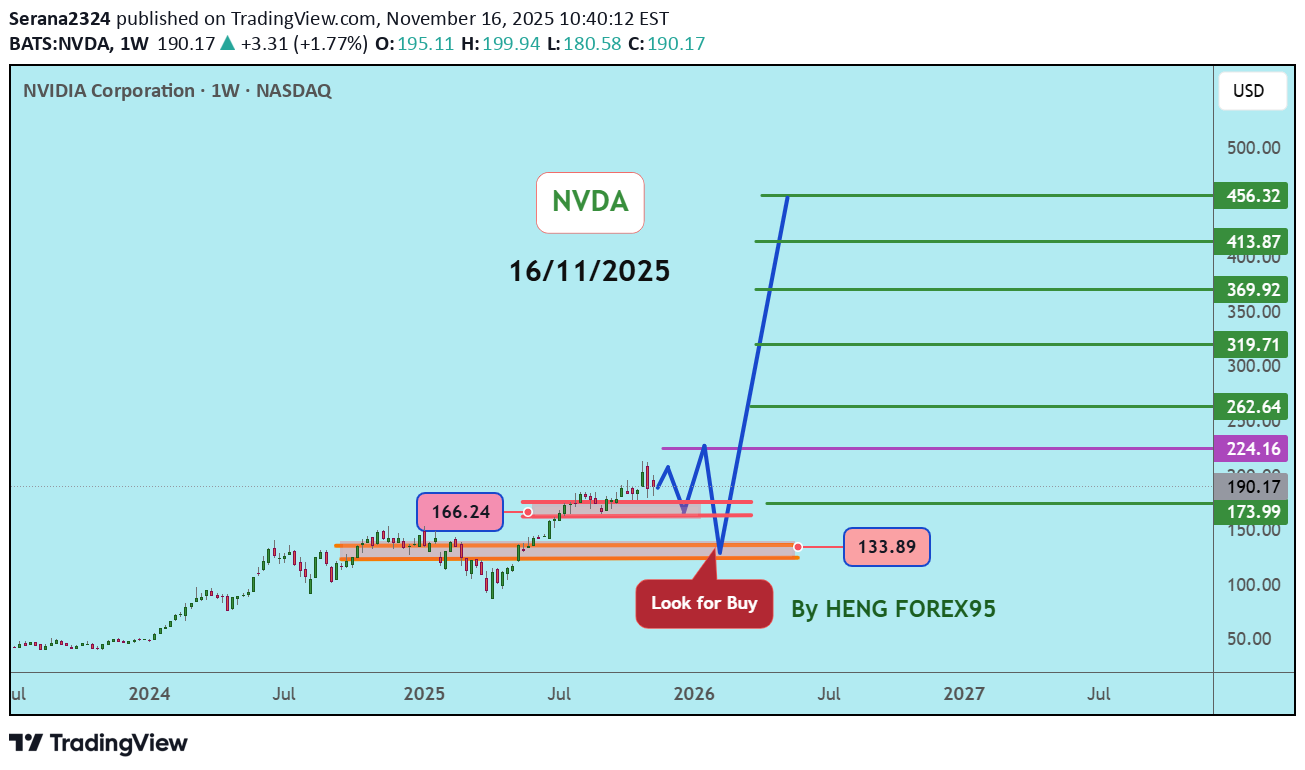
NVIDIA hala yükseliş trendinde. Geçen hafta fiyat 210 dolarlık yeni bir zirveye ulaştı ancak fiyat bu seviyeyi geçemediği için düşüşe geçti. Fiyatın büyük olasılıkla önemli destek bölgesini 167-155$ seviyesinde test etmesi bekleniyor. Fiyat 155 doları aşamazsa fiyatın hâlâ yükselme şansı var. Ancak yakın gelecekte fiyat yükselmeye devam ederse bir düzeltme de yaşanabilir. Uzun vadeli ticaret planı: Satın almadan önce düzeltmenin tamamlanmasını bekleyin. ** Bu finansal tavsiye değildir. 🔥Vadeli işlem, forex, CFD ve hisse senedi alım satımı kayıp riski taşır. Lütfen bu tür bir ticaretin sizin için uygun olup olmadığını dikkatlice değerlendirin. >>İyi şanslar 😊 ❤️ Yeni fikirleri asla kaçırmamak için beğenin ve abone olun!

iamzr
نتیجه گزارش انویدیا (NVDA) چه میشود؟ پیشبینی غیرمنتظره برای شاخص نزدک ۱۰۰
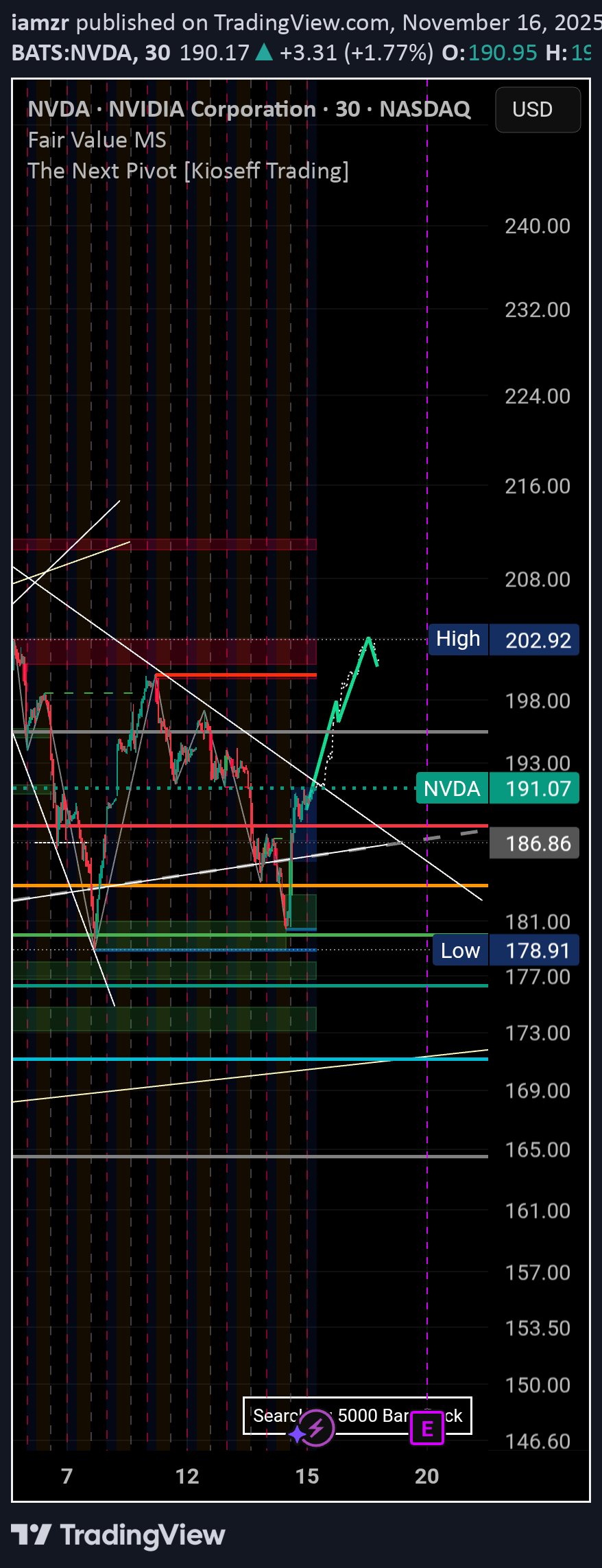
#nvda kazançları beklendiği gibi olmayacak ancak tedbire gerek yok

Bfinance-2025
انفجار انویدیا (NVDA) در گزارش مالی: آیا این آخرین جهش بزرگ قبل از ریزش است؟
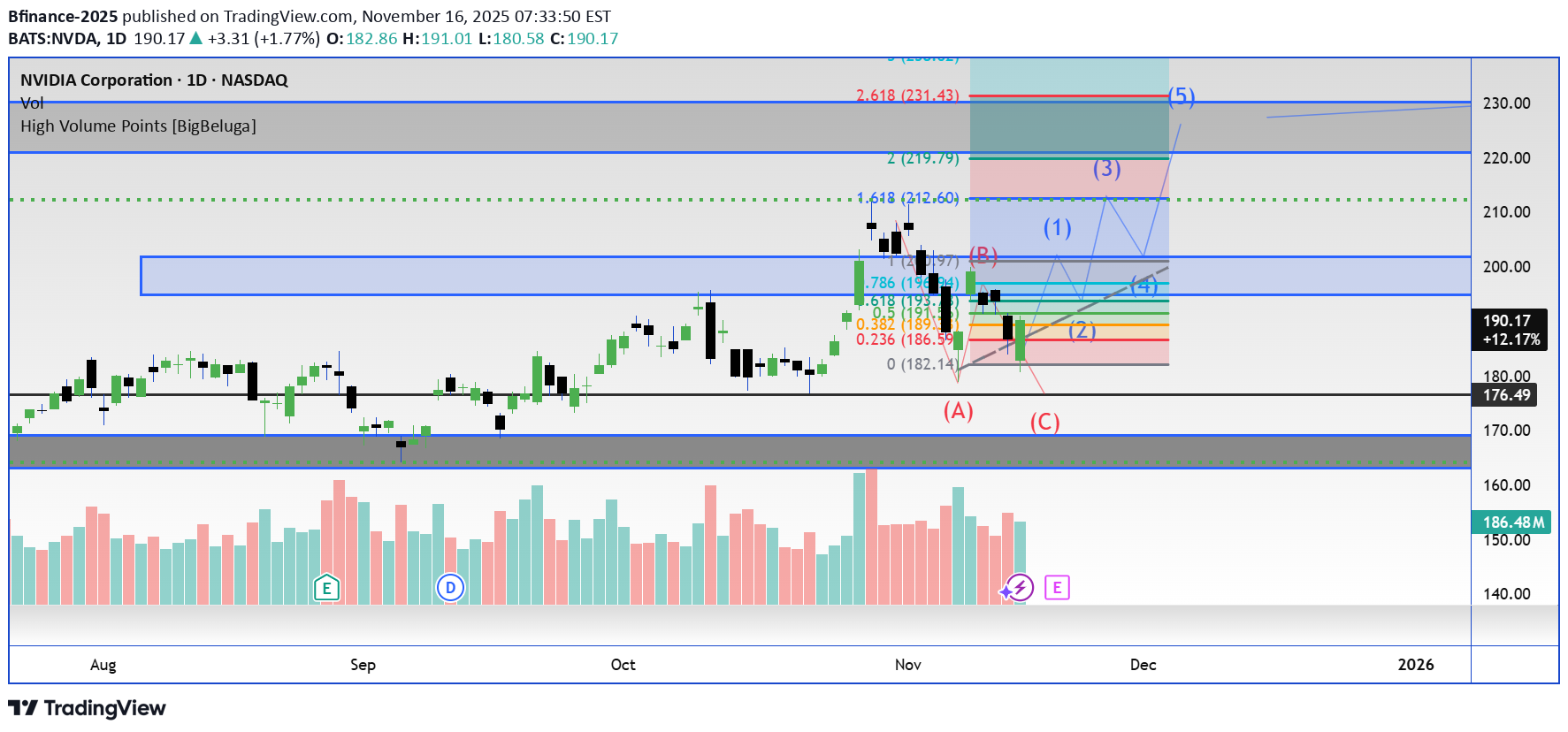
Sorumluluk Reddi
Sahmeto'nun web sitesinde ve resmi iletişim kanallarında yer alan herhangi bir içerik ve materyal, kişisel görüşlerin ve analizlerin bir derlemesidir ve bağlayıcı değildir. Borsa ve kripto para piyasasına alım, satım, giriş veya çıkış için herhangi bir tavsiye oluşturmazlar. Ayrıca, web sitesinde ve kanallarda yer alan tüm haberler ve analizler, yalnızca resmi ve gayri resmi yerli ve yabancı kaynaklardan yeniden yayınlanan bilgilerdir ve söz konusu içeriğin kullanıcılarının materyallerin orijinalliğini ve doğruluğunu takip etmekten ve sağlamaktan sorumlu olduğu açıktır. Bu nedenle, sorumluluk reddedilirken, sermaye piyasası ve kripto para piyasasındaki herhangi bir karar verme, eylem ve olası kar ve zarar sorumluluğunun yatırımcıya ait olduğu beyan edilir.
